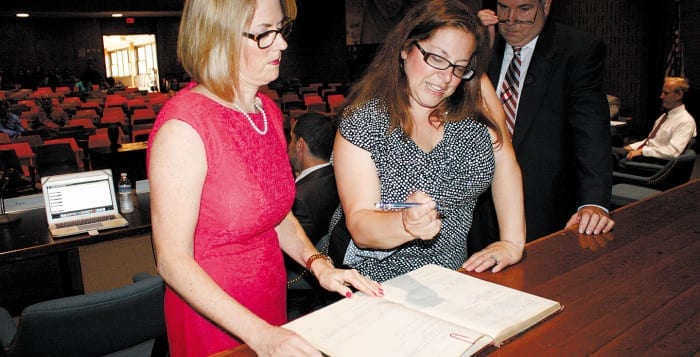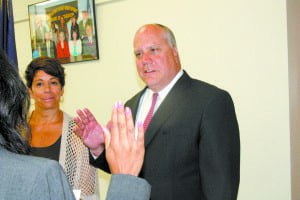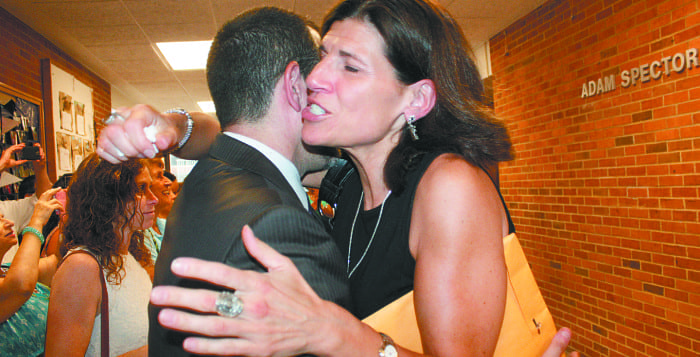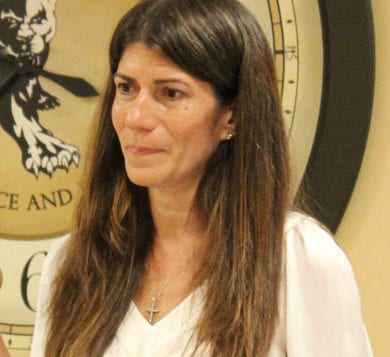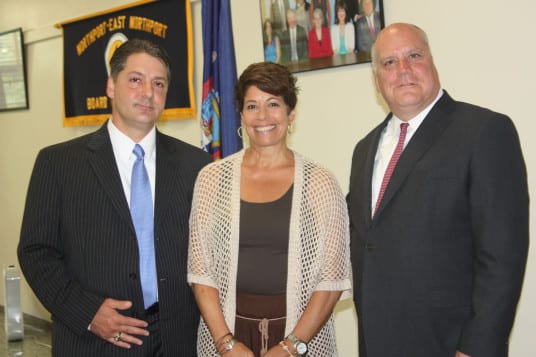By Talia Amorosano
“Can You Believe Most Americans STILL Have Never Heard of Nikola Tesla?!?!” reads the subheading on the Indiegogo campaign Web page dedicated to increasing public awareness of the often overlooked inventor, not to mention raising funds for the restoration of Wardenclyffe, his last surviving laboratory in Shoreham.
Film director Joseph Sikorski said he first learned about Tesla in a bookstore.
“I was shocked that I had gone through the whole educational system without hearing about him,” he said. “He sacrificed so much for humanity. He needed to be vindicated.”
For Sikorski, this vindication came in the form of a film, which is set to premiere on Long Island at Shoreham-Wading River High School this Friday, July 10, at 7 p.m.
“Hopefully, by bringing attention to who he was and dispelling the myths, he’ll have his credit restored,” Sikorski said, regarding the effect he hopes his documentary, “Tower to the People,” will have on viewers.
Thus far, Sikorski has been pleasantly surprised by the reaction his film has received after its first three screenings in New York City, Toronto and Belgrade.
He described the response as “overwhelming,” noting that each venue had “standing room only,” and “people have been crying.”
He said the Long Island premiere would be particularly special, “because it’s happening just a few minutes from where the tower was” and “because all the benefits from the screening will be given to the Tesla Science Center.”
According the Indiegogo Web page, “Tower to the People” is about the past, present, and future of Nikola Tesla’s Wardenclyffe lab, a site from which the genius inventor dreamed of sending free wireless energy to the entire earth.”
It features interviews with celebrity illusionist, Penn Jillette, of Penn & Teller; internet cartoonist, Matthew Inman, of The Oatmeal, who helped launch an online campaign to save the Shoreham site in 2012; award-winning author, Jack Hitt; and Tesla’s closest living relative, William Terbo.
The Tesla Science Center, the nonprofit group that now owns and maintains the site, raised nearly $1.4 million thanks to Inman’s viral campaign and purchased the property in 2013. Sikorski donated $33,000 to Inman’s “Let’s Build a Goddamn Tesla Museum” initiative.
Even the most knowledgeable Tesla fan is sure to learn something new, as the film provides access to rare photographs and documents the first ever ground-penetrating radar investigation into the tunnels under Wardenclyffe.
Sikorski said he hopes the film will motivate viewers to contribute to the effort to restore the Wardenclyffe property.
According to Jane Alcorn, president of the Tesla Science Center at Wardenclyffe, there are still hazardous conditions inside the buildings at this point. But with a $1 million commitment from Elon Musk, inventor, engineer, and CEO of Tesla Motors and SpaceX, to partially fund lab restoration plus funds raised through the Bricks for Nik program, completion within the “next several years” seems promising.
Alcorn expressed hope that the space will eventually encompass a museum, learning center, and maker lab, in which local inventors could learn how to use laboratory equipment to make their visions a reality.
“We would like to support inventors by providing some space for work like that, particularly if it relates to Tesla,” she said.
Sikorski and Alcorn believe that Tesla’s research is still relevant today.
“His ball lightning studies couldn’t be replicated,” Sikorski said. “Because of the way he’s been marginalized, they’ve shunned him and put his research aside.”
Alcorn agreed. “Because he was quite a bit ahead of his time, people looked at him as a bit of a crackpot,” she said. “But much of what he was talking about was very true. … What we’re finding is that a lot of what he was thinking about, including wireless transmission of energy, is a hot topic now. … He’s not taught about in our schools and he deserves to be acknowledged.”
Tickets for the July 10 screening are available at www.Eventbrite.com. Tickets at the door are $12. Seating is limited.


